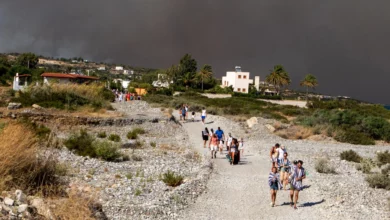
Within the stone walls of the medieval village of Santo Stefano di Sessanio, narrow lanes weave through stone arches, cobbled piazzas and overhanging buildings.
The streets are mainly empty, except for tourists admiring the architecture and surrounding hills in Italy's southern L'Aquila province.
A village which over centuries lived off agriculture and wool, Santo Stefano di Sessanio has just 108 inhabitants, less than a tenth of its pre-World War One population according to its mayor. Like many surrounding villages, most residents left for work in cities or abroad, leaving it all but abandoned.
Decades later, its untouched architecture caught the attention of Swedish-Italian entrepreneur Daniele Kihlgren, who came across it on a 1999 motorbike trip.
Kihlgren bought several houses, turning them in 2005 into a hotel with rooms scattered around the center. The project has drawn tourists and injected life back into the village, according to locals.
"When I first arrived … it seemed nearly abandoned," Kihlgren said. "Everything had stopped in a past era."
While it still has shepherds and farmers, today Santo Stefano di Sessanio is being revived through tourism, with residents seeking to draw visitors to the surrounding Gran Sasso and Monti della Laga national park to their picturesque lodgings.
"You can see a visible increase in visitors," mayor Fabio Santavicca said, without giving figures. "People have opened up their homes, renting out rooms, opening restaurants. It is a positive."
The village now has around a dozen tourist lodgings, Santavicca said, with plans to develop local leisure activities.
According to the most recently available hospitality figures from the regional tourism department, the village saw 4,361 visitor arrivals in 2013 versus 900 in 2005.
Santo Stefano di Sessanio is one of several villages in the Abruzzo region which saw its population depleted as the collapse of its wool-making industry after the introduction of synthetic materials, poverty and natural disasters in the active earthquake area drove people away.
In nearby San Silvestro village, vegetation fills empty buildings. Further north, Vale Piole is deserted.
According to Santavicca, Santo Stefano di Sessanio had some 1,100 residents before World War One.
The village, which in winter sees its population fall further as some residents swap its 1,250-meter altitude for the valley, has also drawn secondary home owners from cities.
"People love coming to this region," said resident Amelia, who owns a bed and breakfast and offers cooking classes to tourists. "We are working hard on opening it to the world."




